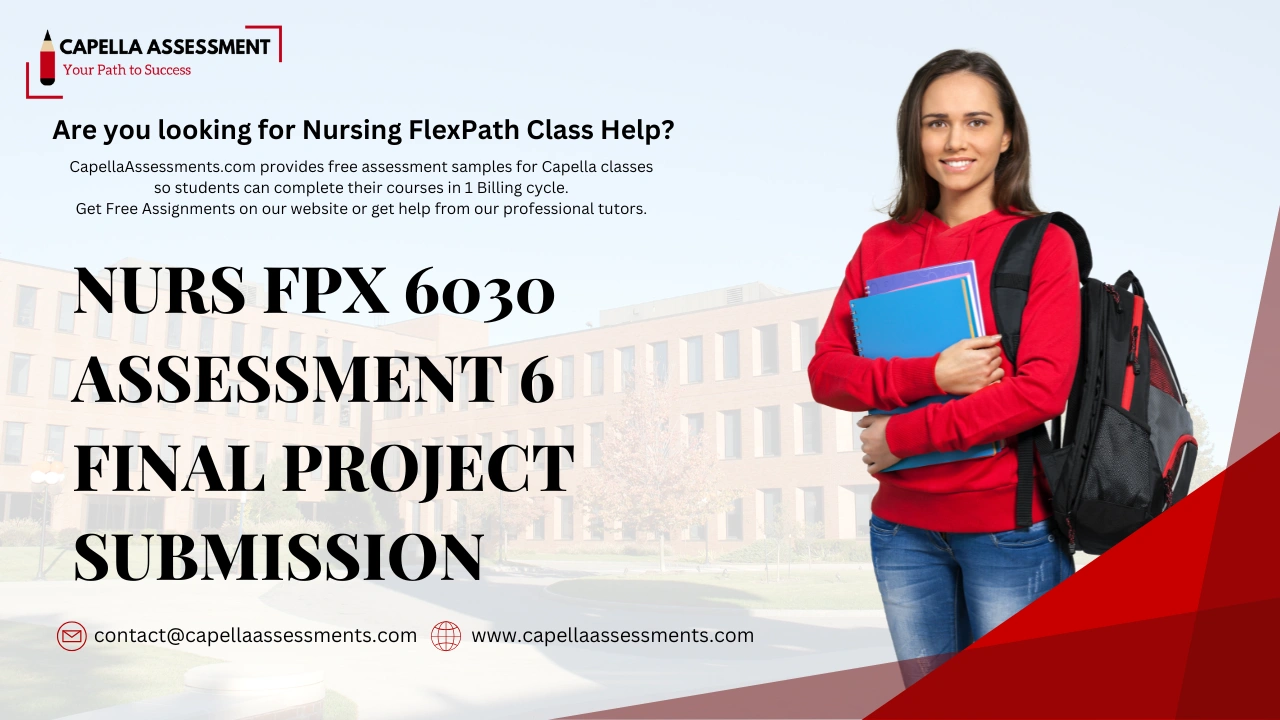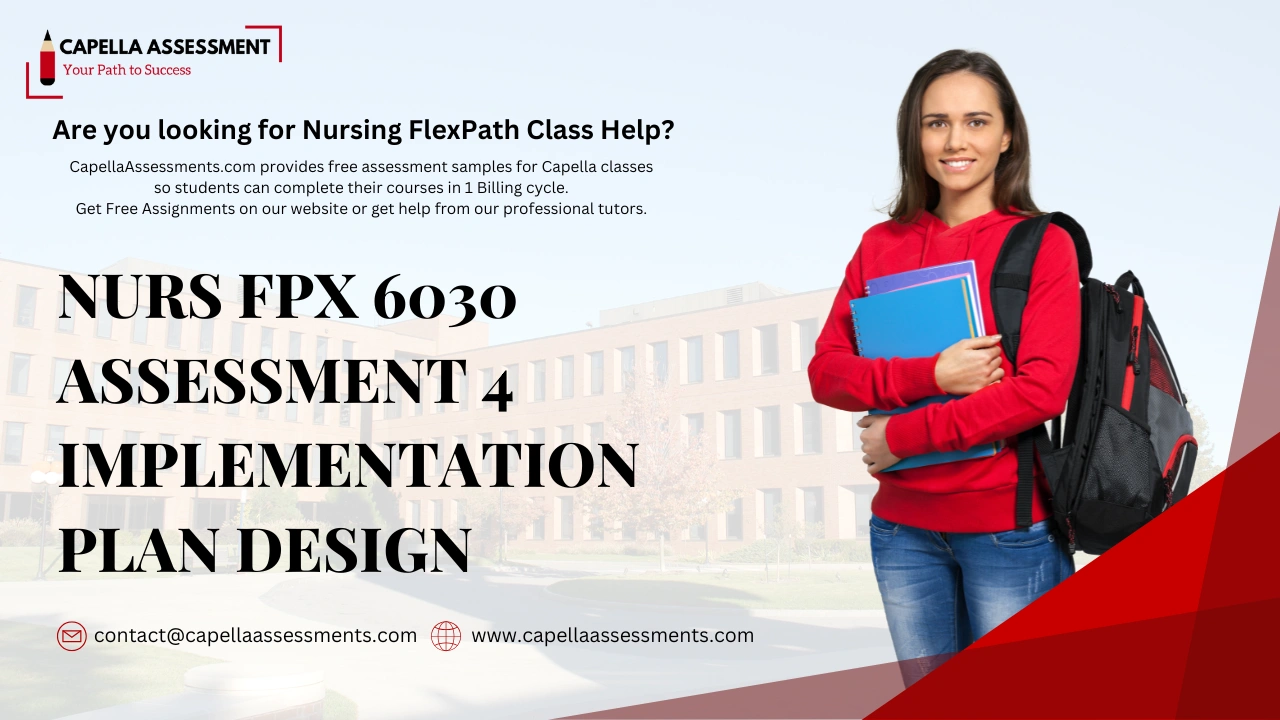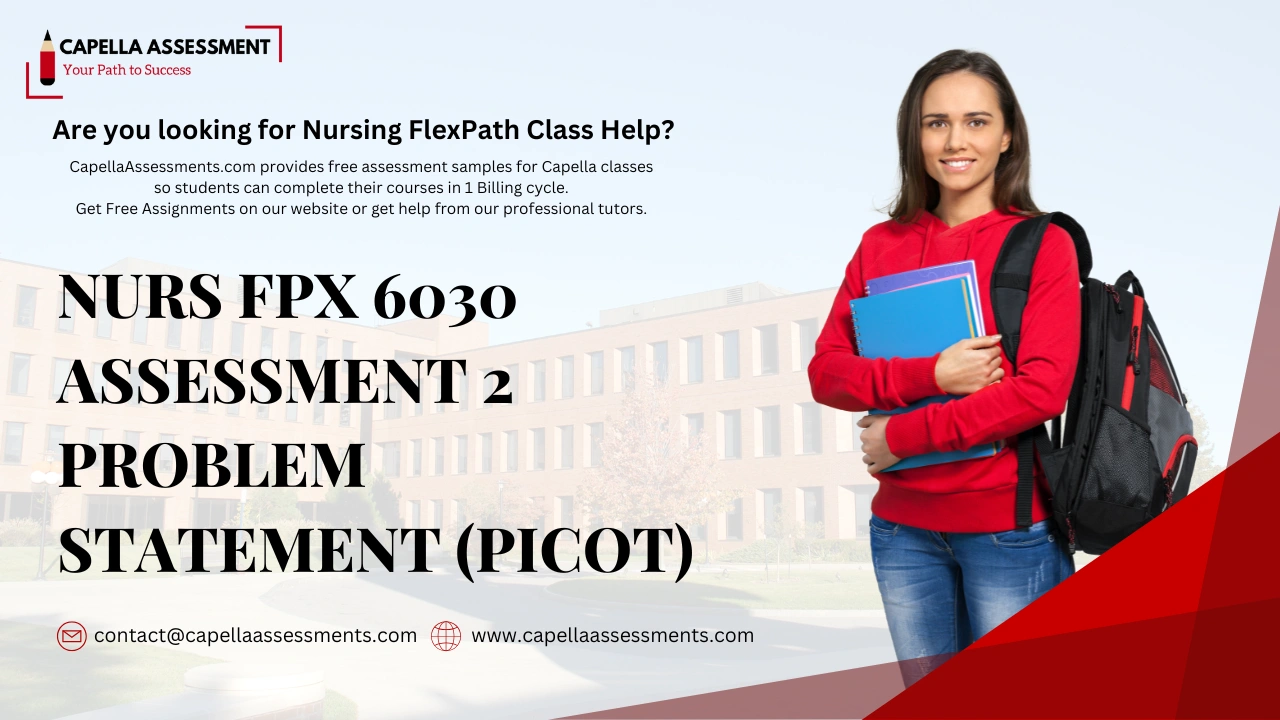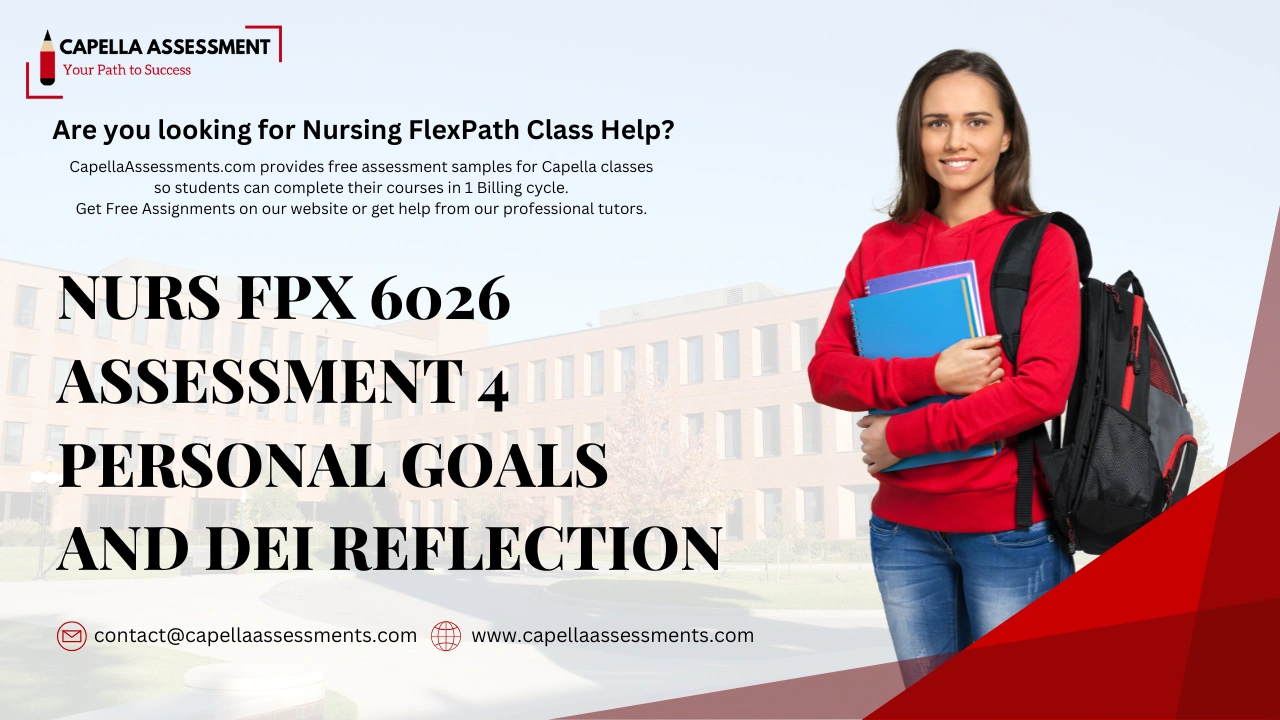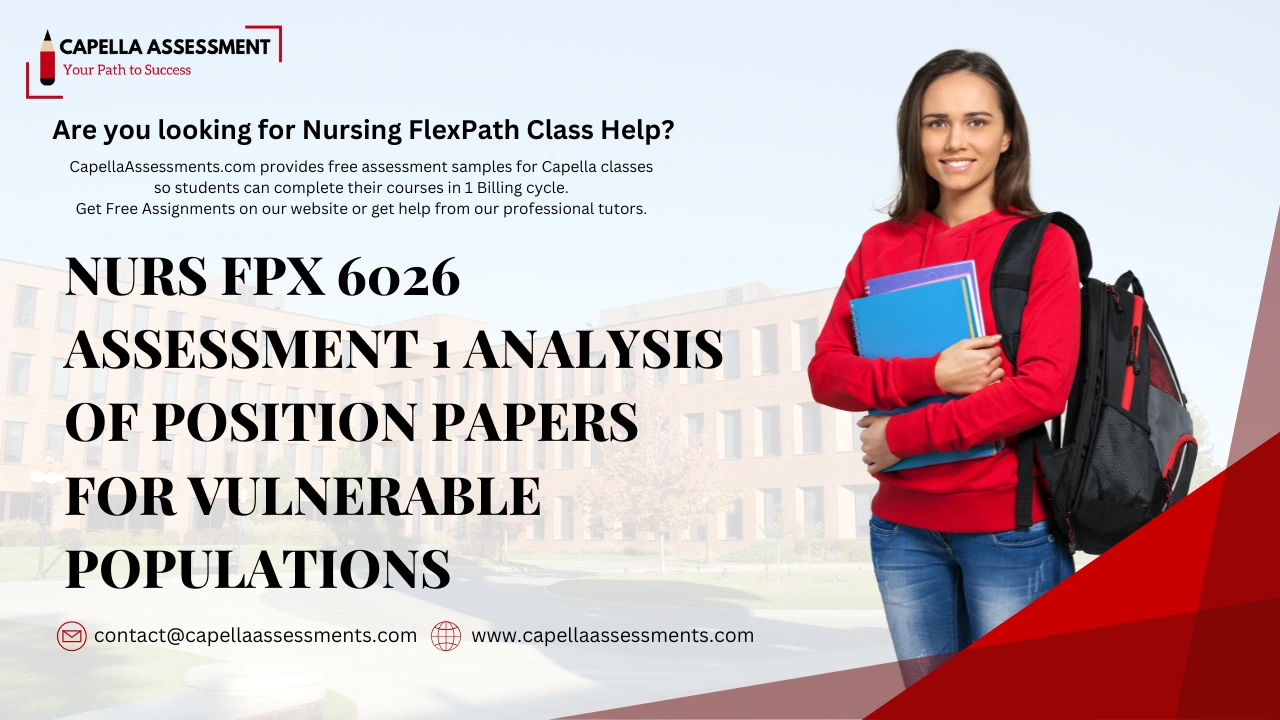NURS FPX 6030 Assessment 6 Final Project Submission
NURS FPX 6030 Assessment 6 Final Project Submission Name Capella university NURS-FPX 6030 MSN Practicum and Capstone Prof. Name Date Abstract Type 2 Diabetes Mellitus (T2DM) is caused by the inability of individuals to respond to insulin. It is more common among those who lead sedentary lifestyles and consume calorie-dense foods. This capstone project focuses on delivering tailored self-management skills through education among adult T2DM patients. The study will follow adult T2DM patients for six months. The primary goal was to improve adult T2DM patient conditions and medical care through better self-management skills. According to the findings, educational programs increase adult patients’ standard of life by increasing their understanding and awareness of healthy behaviors and their ability for self-management. Adult patients who acquire self-management education show significant promotion in their health and adopt healthy eating habits compared to individuals with conventional treatment without specific education. Including telehealth services like mobile apps and telemedicine accelerates the instructional process for adult T2DM patients. Incorporating stakeholder opinions, state organization regulations, and ethical considerations improves the intervention plan. The research findings revealed that care practitioners enhance the health condition of adult T2DM patients by offering education to improve self-management and minimize hospitalizations. Introduction The primary focus of the capstone project is to meet the complex needs of adult T2DM patients. T2DM is a common and demanding disorder that causes insulin resistance and harms various organs in the body. High death rates, low living quality, and severe economic and resource burdens on medical systems highlight the problem. It has been revealed that T2DM healthcare and associated repercussions comprise about 12% of worldwide health costs. T2DM caused 4.2 million deaths around the world in 2019. T2DM is the main trigger of roughly $720 billion in therapeutic costs (Garcia et al., 2020). The capstone project will focus on adult T2DM patients in a clinical environment. The capstone project centers on adult T2DM patients with complex healthcare demands. Self-management concerns substantially impact the population, leading to hospitalizations and increased complications (Sayuti et al., 2024). The intervention plan for adult T2DM patients is extensive, including a self-management education program. The effort intends to enhance self-care practices in T2DM patients by providing tailored education on self-management, encouraging adherence to therapy, symptom identification, and behavioral changes (Ernawati et al., 2021). The need to alleviate the suffering and poor quality of life encountered by adult T2DM patients requires the implementation of an intervention plan. Adults with T2DM confront daily challenges, including chronic tension and anxiety and an increased risk of psychological problems, including eating disorders (Visagie et al., 2023). Incorporating a self-care educational program enhances the quality of life while giving practical advice to improve eating habits among adult T2DM patients, improving health outcomes (Griffin et al., 2019). The intervention strategy, which involves multidisciplinary collaboration among nurses, clinicians, dieticians, health instructors, and administrators, aims for effective interventions in the healthcare system (Shrestha et al., 2022). Incorporating nursing care models, state laws, and leadership tactics improves patient outcomes by encouraging medical practitioners to coordinate and work together. Education programs for T2DM patients increase knowledge and adjust lifestyle and eating habits, improving health (Ernawati et al., 2021). Furthermore, the evaluation strategy will track the intervention’s outcomes for six months. The evaluation plan measures the intervention’s influence on the health of adult T2DM patients through surveillance metrics such as glucose levels and Body Mass Index (BMI), and analyzing complication reduction and hospitalization rates. The survey approach will be used to acquire feedback and questionnaire data to analyze the intervention’s efficiency. Pre- and post-tests can be undertaken to examine the progress in knowledge, comprehension, and attitudes toward medicines and self-management among adult T2DM patients (Griffin et al., 2019). Evaluation of the Best Available Evidence In-depth literature research was conducted using Medline, Google Scholar, CINAHL, and PubMed databases to assess the intervention. The study focused on the educational programs’ impact on self-management and lifestyle modifications among adult T2DM patients. It significantly impacts standards of life, related complications, and hospitalization rates. The findings reveal that education programs improve patients’ self-management abilities and optimize their medical conditions through behavioral modification (Ernawati et al., 2021). Problem Statement (PICOT) In adult patients with type 2 diabetes mellitus (P), does implementing the patient education programs (I), compared to standard care without specific education (C), lead to improved self-management skills (O) over six months (T)? Needs Assessment The project addresses an essential gap in health promotion and healthcare improvement for adult T2DM patients. The key requirement is to adopt a comprehensive care solution with tailored self-management assistance delivered through educational programs. Patients benefit from educational initiatives beyond conventional T2DM patient care without specific education. Addressing this requirement is critical considering the complexities of T2DM care, where successful outcomes depend on the patient’s capacity to manage their illness through lifestyle adjustments and symptom surveillance. Addressing this requirement is critical because of the high rates of hospital readmissions and low standard of life encountered by adult T2DM patients, which is caused by inadequate self-management. The research of Powers et al. (2020), supports the urgency of this need. Diabetes Self-Management Education and Support (DSMES) deals with the extensive combination of medical, instructional, emotional, and behavioral elements of treatment required for regular self-care, offering a framework for assisting T2DM patients in self-care with precision and better outcomes. Similarly, Ernawati et al. (2021), illustrated that educational programs are crucial in motivating T2DM patients to adopt and sustain lifestyle alteration, enhancing their medical conditions. It helps to improve the understanding, perspectives, and skills required for effective self-management. Furthermore, Tamiru et al. (2023), stressed the importance of nurses’ competence in educating T2DM patients, stating that nurse-led DSME can lower baseline glycosylated hemoglobin A1c levels. Furthermore, it substantially shifts in psychological outcomes, self-care behaviors, and physical outcomes. This evidence emphasizes the necessity of educational programs for managing T2DM through self-management skills. The basic assumption in this analysis is that education programs will result in improved health outcomes for T2DM patients. Population and Settings The capstone project focuses on the adult T2DM patient population who lack adequate self-care abilities to manage their health condition. This population is particularly affected by difficulties in self-managing their disease, which frequently leads to hospital readmissions. According to Gek et al. (2020), adult T2DM patients account for one-fifth of the

